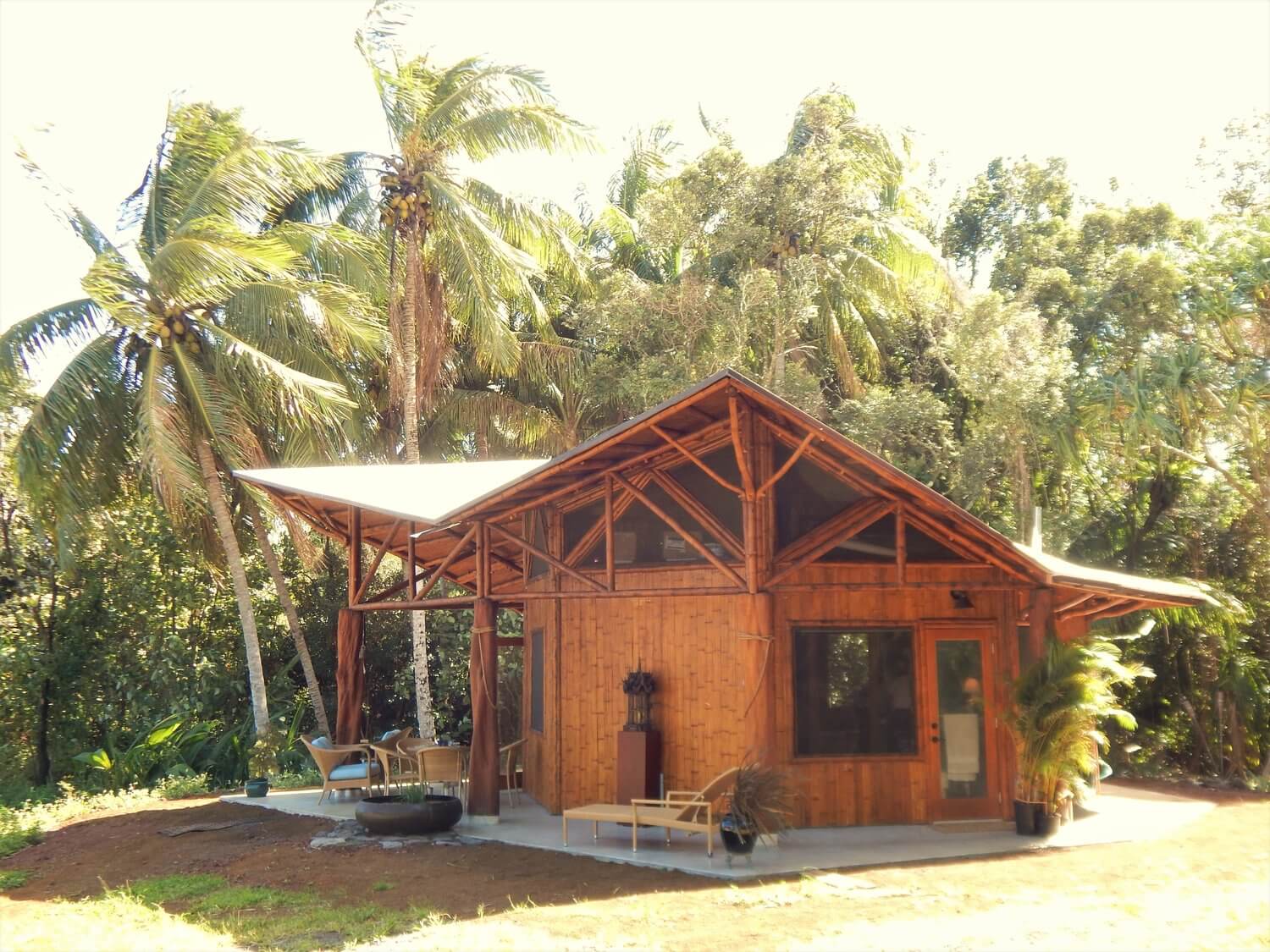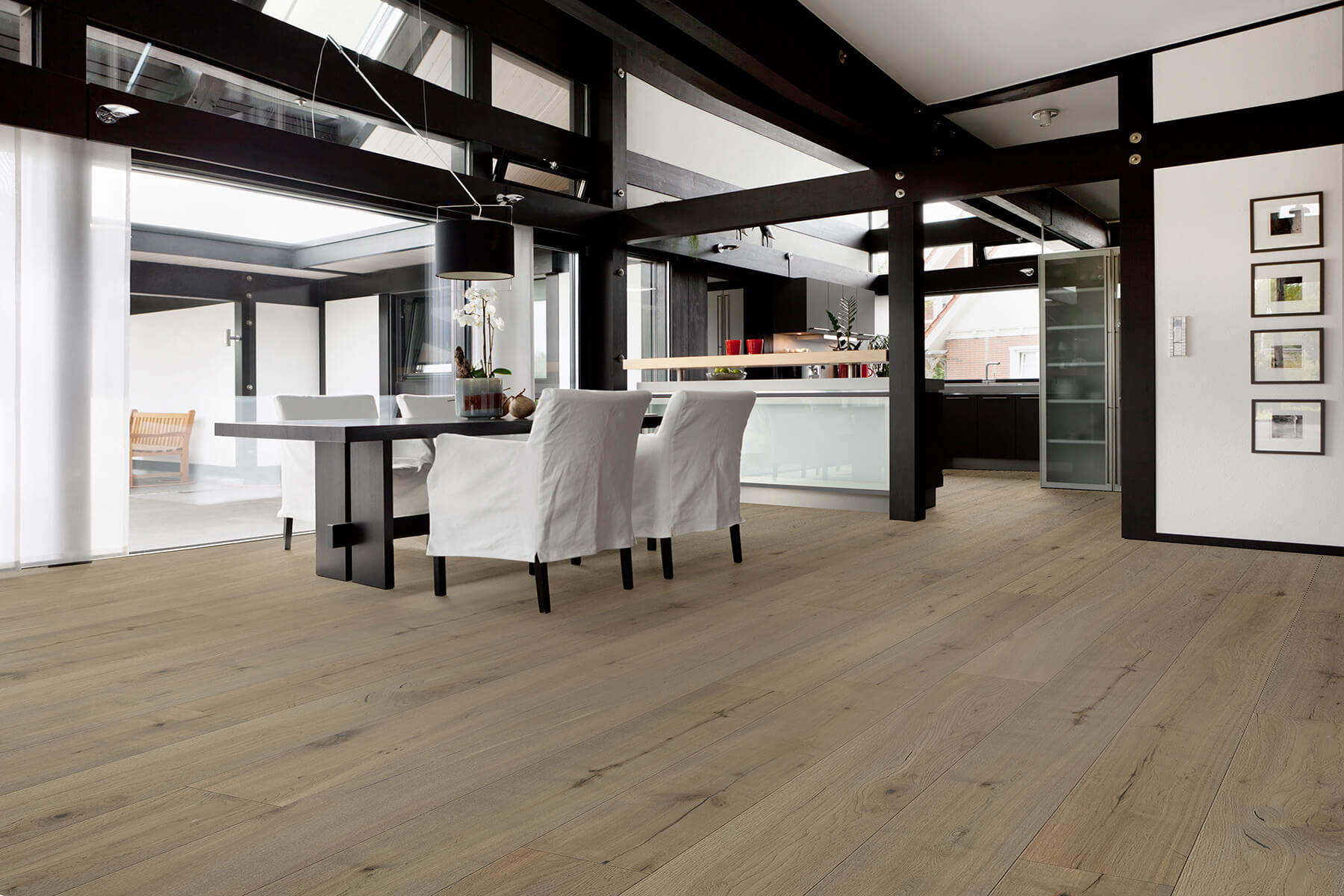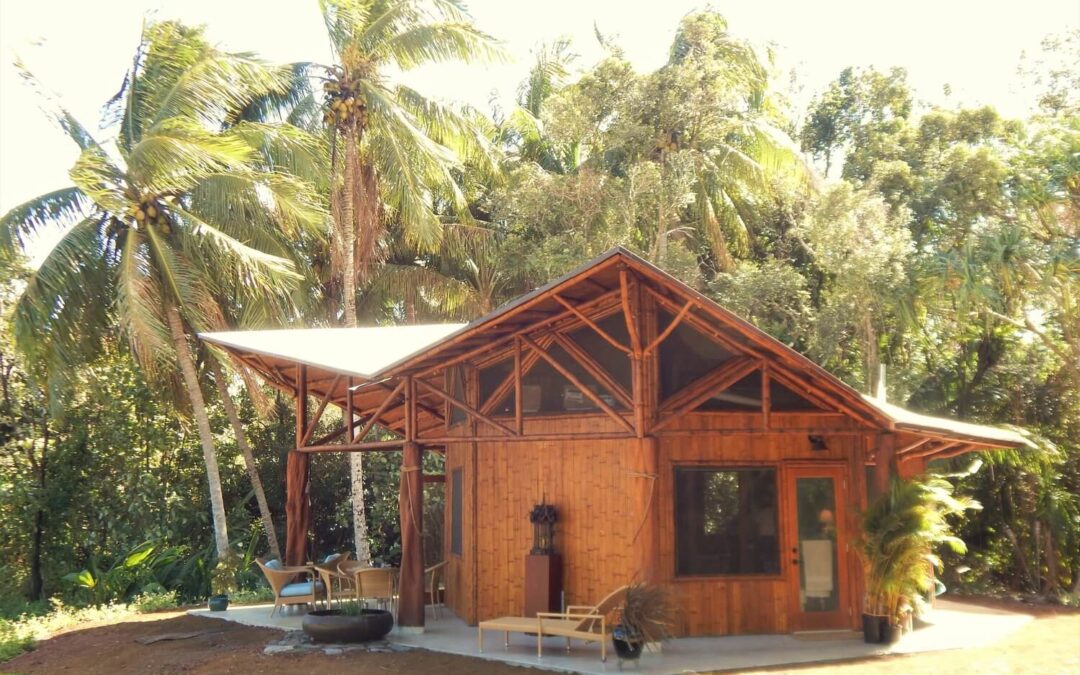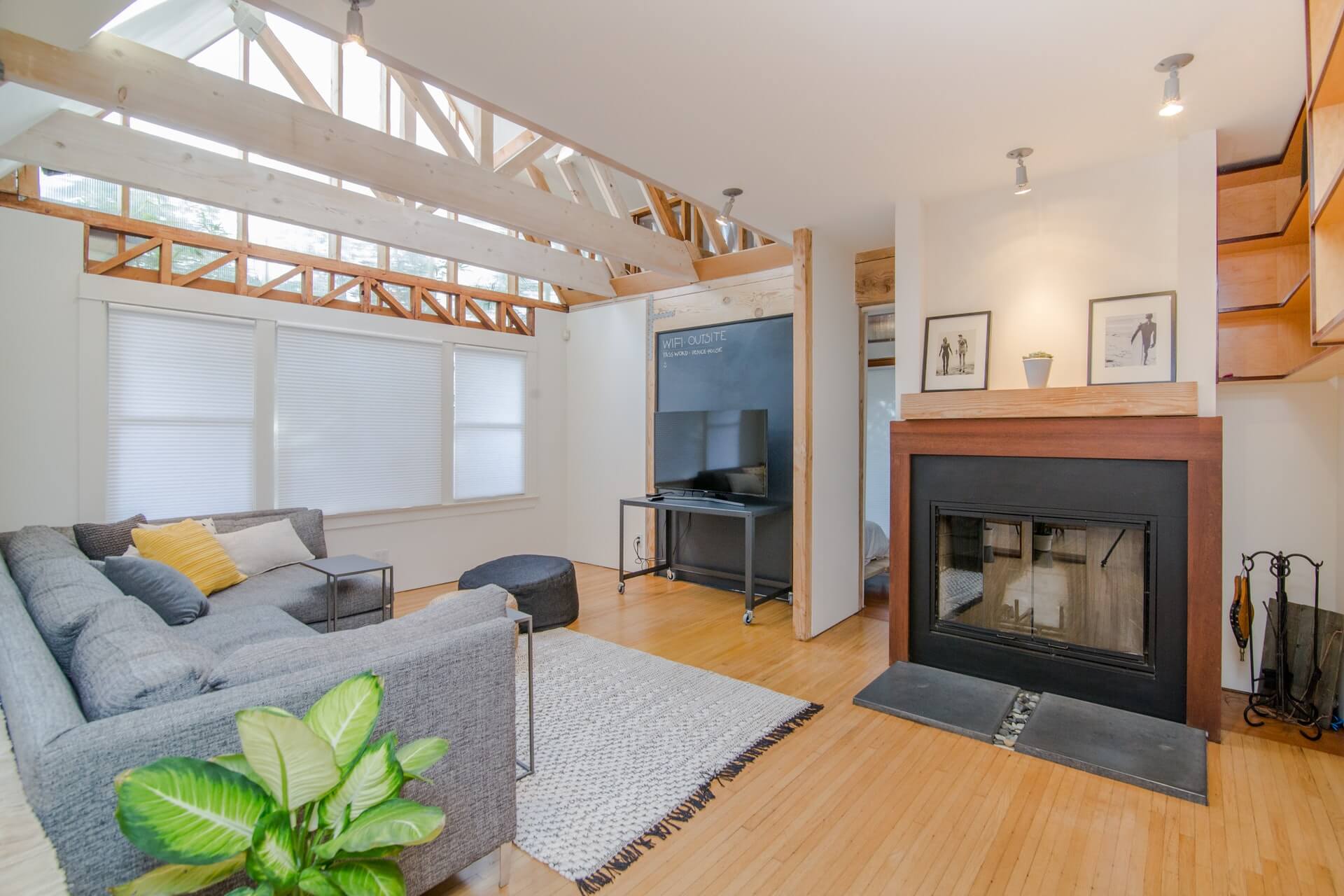Eco-friendly building materials, also known as sustainable or green building materials, are products that are designed to have a minimal negative impact on the environment throughout their lifecycle. These materials are gaining popularity in the construction industry as more people recognize the importance of reducing carbon emissions, conserving resources, and promoting healthier living spaces.
By choosing eco-friendly building materials, we can contribute to sustainable development and create a greener future.
Here are some examples of commonly used eco-friendly building materials:

Image Credit: BambooLiving
- Bamboo: Bamboo is a fast-growing and renewable resource that can be used as an alternative to wood. It is strong, durable, and has a high tensile strength. Bamboo can be used for various applications in construction, such as flooring, wall panels, and even structural elements.
- Recycled Steel: Steel is a commonly used material in construction, and using recycled steel helps reduce energy consumption and carbon emissions associated with its production. Recycled steel can be used for framing, roofing, and reinforcement, among other applications.
- Recycled Plastic: Plastic waste is a significant environmental concern, and using recycled plastic in construction helps divert it from landfills. Recycled plastic can be turned into durable materials such as composite lumber, roofing tiles, and insulation.
- Reclaimed Wood: Reclaimed wood refers to salvaged wood from old buildings, barns, or other sources that would otherwise be discarded. Using reclaimed wood not only reduces the demand for new timber but also adds character and uniqueness to a building’s design.
- Cork: Cork is a sustainable material obtained from the bark of cork oak trees. The extraction process does not harm the tree, and it can regenerate its bark. Cork is a great insulator, fire-resistant, and has excellent acoustic properties, making it suitable for flooring, wall coverings, and insulation.
- Hempcrete: Hempcrete is a bio-composite material made from the woody core fibers of the hemp plant mixed with a lime-based binder. It is lightweight, non-toxic, and has excellent thermal insulation properties. Hempcrete is commonly used in wall construction, providing a breathable and energy-efficient alternative.
- Low VOC Paints: Volatile Organic Compounds (VOCs) are chemicals found in many conventional paints that release harmful gases into the air. Low VOC paints, on the other hand, have reduced or no harmful emissions, making them healthier for occupants and the environment.
- Solar Panels: While not a building material per se, solar panels are an essential component of sustainable construction. They harness the sun’s energy to generate electricity, reducing reliance on fossil fuels and lowering carbon emissions.
- Green Roofs: Green roofs involve planting vegetation on the roof of a building. They provide insulation, absorb rainwater, mitigate the urban heat island effect, and promote biodiversity in urban areas.
These are just a few examples of eco-friendly building materials available today. Incorporating these materials into construction projects can significantly reduce the environmental impact of buildings, promote energy efficiency, and create healthier and more sustainable living and working environments.
Benefits, applications, and where to source, bamboo, recycled steel, reclaimed wood, and low VOC paints.
Bamboo
- Benefits: Bamboo is a fast-growing, renewable resource that offers numerous benefits for eco-friendly house construction. It is strong, durable, and has a high tensile strength. Bamboo also has excellent sustainability credentials, as it requires minimal water and no pesticides during growth.
- Applications: Bamboo can be used for various applications, including flooring, cabinets, countertops, wall panels, and even structural elements such as beams and columns.
- Where to Source: Look for sustainably sourced bamboo products from reputable suppliers or manufacturers that adhere to responsible harvesting practices and certifications like the Forest Stewardship Council (FSC) certification.
Check out Bamboo Living for real life examples
Check out pavibamboo for LEED certified bamboo suppliers
Recycled Steel
- Benefits: Using recycled steel in construction helps conserve natural resources, reduces energy consumption, and prevents waste from going to landfills. Recycled steel also has comparable strength and durability to new steel.
- Applications: Recycled steel can be used for structural components, such as beams, columns, and framing, as well as for roofing, siding, and interior finishes.
- Where to Source: Connect with local steel fabricators or suppliers specializing in recycled steel. They can provide information on the availability of recycled steel products and assist with sourcing materials for your construction project.
Karpen Steel for LEED certified Steel suppliers
For Recycled scrap steel check out ReSteel Supply Company.

Image Credit: EcoTimber
Reclaimed Wood
- Benefits: Reclaimed wood refers to salvaged wood from old structures, such as barns, warehouses, or demolished buildings. By using reclaimed wood, you help reduce deforestation, save energy required for processing new wood, and add unique character to your eco-friendly house.
- Applications: Reclaimed wood can be used for flooring, wall cladding, beams, doors, furniture, and decorative elements.
- Where to Source: Look for reclaimed wood suppliers or specialized architectural salvage yards that source and sell reclaimed wood. Ensure that the reclaimed wood has been properly inspected, treated if necessary, and certified to be free from pests or contaminants.
Contact All American Waste for Residential Waste Recycling
For reclaimed wood, check out Eco Timber for sustainably sourced ecofriendly products.
Low VOC paints
- Benefits: Volatile Organic Compounds (VOCs) are harmful chemicals present in conventional paints that can release harmful gases into the air, contributing to indoor air pollution. Low VOC paints have significantly reduced levels of these harmful emissions, leading to better indoor air quality and a healthier living environment.
- Applications: Low VOC paints can be used for interior and exterior painting, including walls, ceilings, trim, and furniture.
- Where to Source: Many paint manufacturers now offer low VOC or zero VOC paint options. Look for eco-friendly paint brands available in your region, and check product labels or certifications like Green Seal or Greenguard to ensure their low VOC content.
Check out Green Building Supply for eco-friendly products and non-toxic environment
Learn more about Low-Emitting materials and know how LEED works.
When sourcing these eco-friendly building materials, it’s important to do thorough research, select reputable suppliers, and verify their environmental certifications or credentials. Additionally, consult with architects, contractors, or green building professionals who can guide you on the appropriate applications and best practices for integrating these materials into your eco-friendly house construction project.
To immediately start building an eco-friendly house, you will need the following essentials:
Begin by developing a sustainable design plan that incorporates energy efficiency, renewable energy systems, water conservation measures, and the use of eco-friendly building materials.
Engage the services of architects or designers with expertise in sustainable design. Collaborate with them to develop a detailed architectural plan that aligns with your vision of an eco-friendly house.
Hire contractors and builders who have experience in eco-friendly construction practices. Look for professionals who understand sustainable materials, energy-efficient systems, and green building techniques.
Source eco-friendly building materials for your construction project. Consider materials such as bamboo, reclaimed wood, recycled steel, low VOC paints, and energy-efficient windows.
Install energy-efficient systems in your eco-friendly house. This may include high-efficiency HVAC systems, solar panels for electricity generation, energy-saving appliances, and LED lighting.
Incorporate water conservation measures, such as low-flow fixtures, rainwater harvesting systems, and efficient irrigation systems, to minimize water usage and reduce environmental impact.
Implement a waste management plan during construction. Set up recycling stations and ensure proper disposal of construction waste. Minimize waste generation by utilizing efficient construction practices.
Plan for sustainable landscaping, incorporating native plants, water-efficient irrigation, and permeable surfaces. Consider features like rain gardens, green roofs, and outdoor living spaces that promote sustainability and enhance the eco-friendly aspects of your home.
Remember, building an eco-friendly house requires careful planning, collaboration with knowledgeable professionals, and a commitment to sustainable practices. It’s essential to prioritize environmentally friendly choices throughout the construction process and consider long-term energy efficiency, resource conservation, and environmental impact.
This post contains affiliate links, which means we may receive a small commission, at no additional cost to you, if you make a purchase through these links.
More Reads














